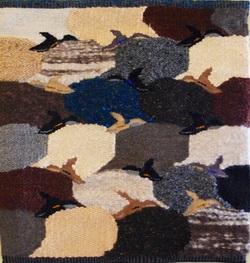 Susan Mori's It Isn't Easy Bein' Blue
Susan Mori's It Isn't Easy Bein' Blue Emerging from the need for shelter and clothing, weaving is the oldest surviving art form and our island community will be given the chance to experience that art at its best. The exhibit features award-winning pieces that originated at the Honolulu Museum of Art School Gallery in Honolulu Aug. 25 through Sept. 13 and was transported to Hawaii Island last week.
The HHH began on Oahu in 1953 as Hui Mea Hana – meaning people working with their hands – with the mission “to encourage and promote excellence in hand weaving by bringing together weavers, spinners, dyers, fiber artists, and educators who share the joy and passion of the fiber arts.”
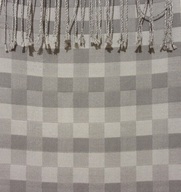 Joan Namkoong's Two Shades of Grey
Joan Namkoong's Two Shades of Grey The Hawaii Island HHH was the brainchild of Joan Namkoong, an accomplished weaver and longtime member on Oahu, who initiated it shortly after moving to this island in 2010. Currently the group is led by Susan Mori and Gretchen Van der Hayden who coordinate monthly meetings.
“They set up a topic. It could be a show and tell, a hands on or a video,” Sherry Heins says, Hawaii Island HHH member. “You bring your weavings to show people what you've done and they all ooh and aah and ask 10,000 questions.”
To take advantage of member expertise, meeting locations can vary. “We try to go around the island and have meetings in different venues and sometimes members’ homes,” Mori says. “Our main venue for our bigger workshops and our monthly casual gatherings is Island Yarn and Art Supplies in Kona and we have been very lucky that they have made a space available to us.”
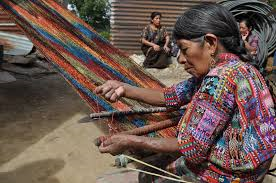
Whether practical or decorative, weaving stands as a metaphor for the transactions between humans and the natural world. “My father was a professor and my family took many trips to Guatemala. I got to see all forms of weaving starting from the spinning and dying,” Mori explains. “I was mesmerized by what the weavers were doing. The whole spirit of the people combined with the landscape went into the weaving there.”
Mori returned to Hawaii Island from Japan where she was able to study with a teacher. “I learned a lot from her about natural fibers and dyes. Weaving like any other art form is a reflection of the person who makes it and their culture,” she says. “It’s the connection you get with people through weaving. As much as I learned about weaving from my teacher in Japan, I probably learned more about the culture of the group of women.”
While it is math and pattern based, weaving is also creative meditation. “When I'm really focused on weaving, the rest of the world can kind of disappear for a while. And when I'm planning a project, sometimes when I wake up, I know I've either been thinking about or dreaming it; suddenly I'll see it,” Mori says. “To me every single weaving I do is like an exploration. It's a question of how you're going to put different textures, fibers and colors together,” she adds.
The love of fiber arts drew Heins to weaving. A long time knitter, she discovered weaving on a trip to Las Vegas where she spotted a woven scarf in a yarn store that she really loved and hasn’t looked back since.
“I joined the HHH and totally enjoyed the ladies,” Heins recalls. “I'm inspired by them all the time. Everybody weaves something different.” Heins generally weaves wearable art. “I do scarves and give them away to friends and family on the mainland,” she says. “I also donate to the Daniel Sayer Foundation for the auction. For the show I did something that was completely impractical.”
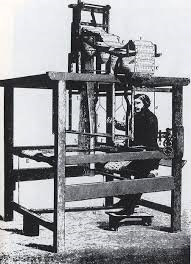 Jacquard Loom
Jacquard Loom Weaving offers myriad educational benefits and along with adult workshops, the HHH offers community outreach in the schools that teach consistency, awareness and balance, along with life lessons. “It's very tactile. They (youngsters) can use their hands and get great satisfaction out of creating something,” Mori says. “There's also a lot of math involved in weaving. It can be a really good math tool, visualizing shapes and patterns. The more complex the pattern, the more math.”
In fact, the invention of the Jacquard loom in France, first demonstrated in 1801 with its automated punch card system, is considered to be the first computer. But while automation has changed hand weaving from an everyday activity producing functional cloth to a contemporary art form, the process of transforming raw fiber into thread and cloth remains essentially the same. Hand and floor looms, drop spindles and spinning wheels retain their original character and function and are used by HHH members today.
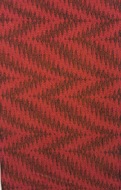 Deborah Rapasky's Seismic Activity
Deborah Rapasky's Seismic Activity The “Shear Delight: Weaving in the Year of the Sheep” show’s juror Deborah Jarchow is a nationally known fiber artist and weaving teacher. Of the 12 award winners, four are from Hawaii Island. Pieces include Debra Repasky’s Seismic Activity (Kona), Susan Mori’s It’s not Easy Bein’ Blue (Waimea), Joan Namkoong’s Two Shades of Gray (Waimea) and Jill Cohen’s Steph’s Scarf (Hilo).
Within the exhibit, the Hawaii Island HHH also display weaving tools and storyboards showing their craft. Handwoven items are also for sale, with a portion of the proceeds going to Kahilu Theatre.
“The art of weaving is disappearing as the world modernizes,” Mori concludes. “It's one of the big reasons for promoting the art and why we wanted to have an exhibit here, sharing with people what weavers do.”
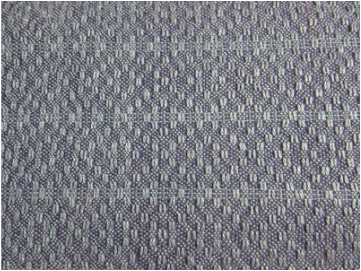
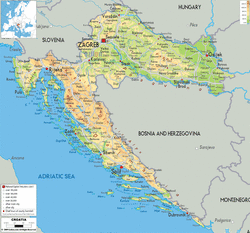
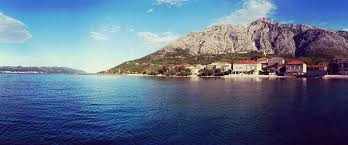
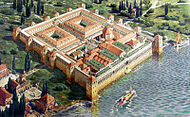
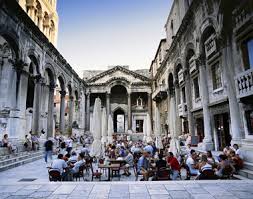
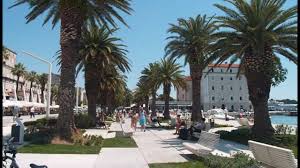
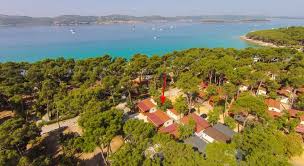
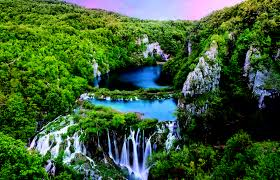
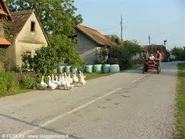
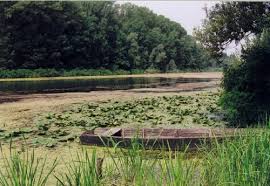
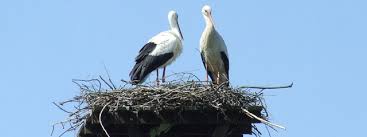
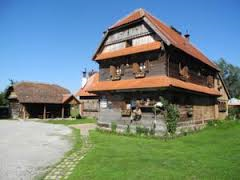
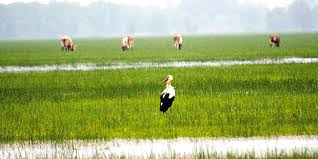
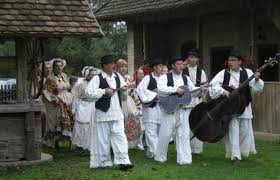
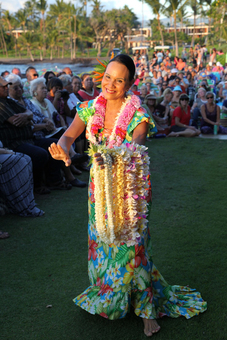

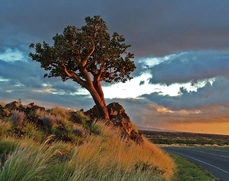
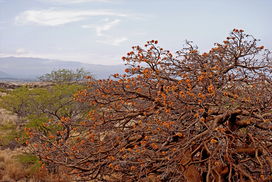
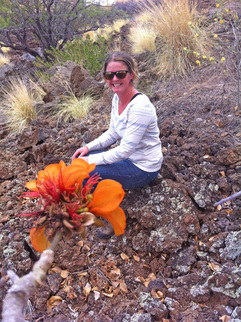
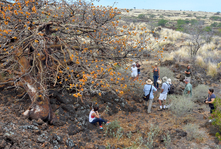
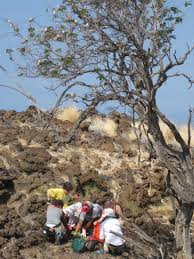
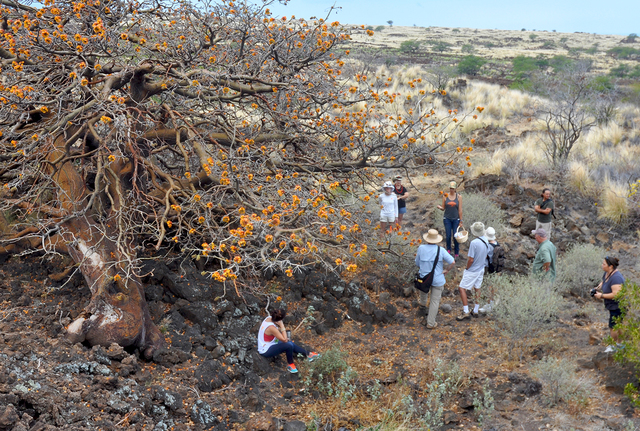
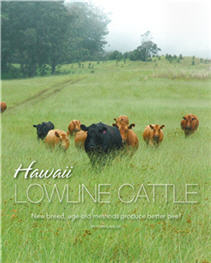
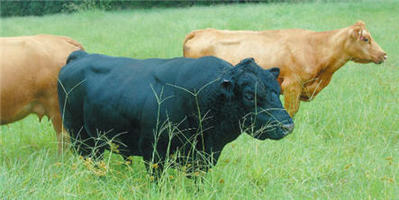
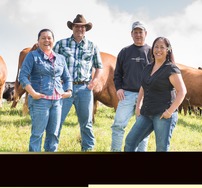
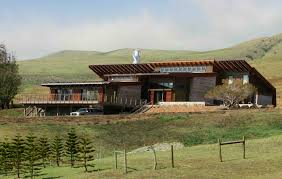

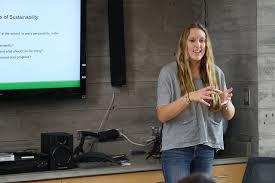
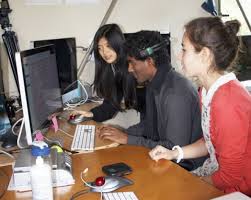
 RSS Feed
RSS Feed
